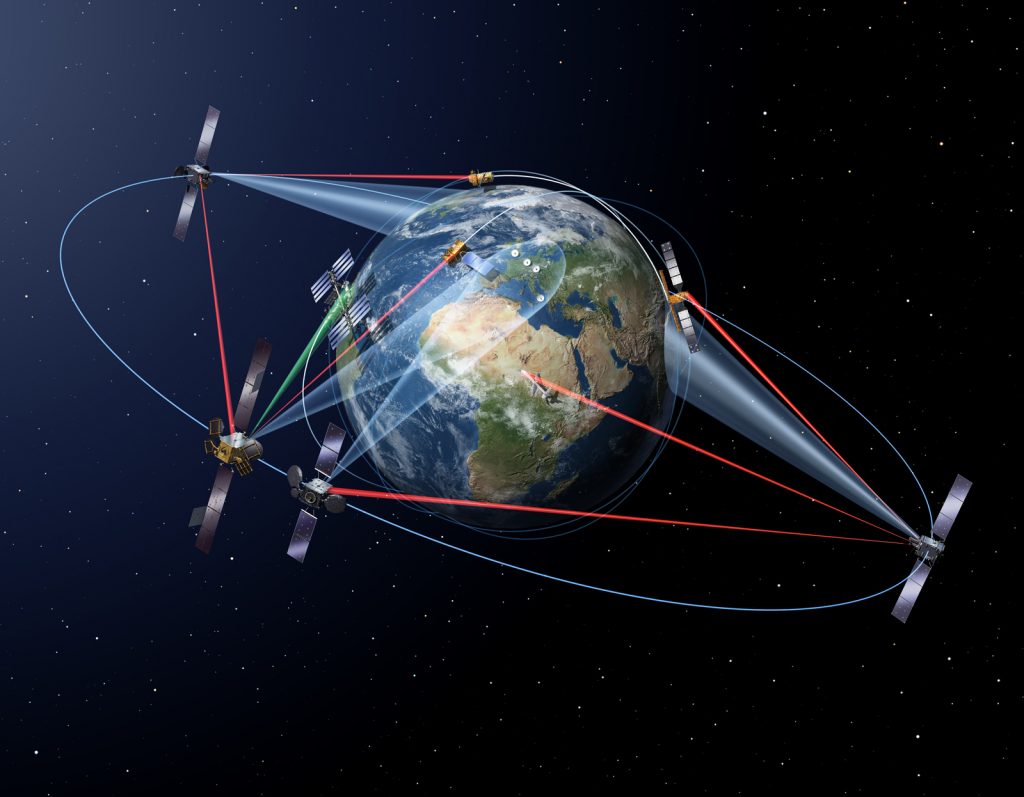Problems with Starlink laser-links?
August 31, 2023

Tim Farrar of TMA Associates, a commentator on the satellite industry, has raised concerns about the “optical crosslinks” or laser beams that operate between satellites.
Optical crosslinks between satellites can drastically increase the constellation’s capability to transmit data to ground stations with reduced latency and increased total throughput. Satellites no longer have to wait to downlink over a particular site. They can relay data to another craft in view of a ground station, and thus providing a constant connection with LEO and MEO constellations.
Such optical crosslinks are fitted onto the latest Starlink satellites and other operators are utilising the technology. The concept is designed to shorten the current signal path which bounce signals off a satellite—and straight back down to Earth, where it is sent through a ground-based gateway and onto the same internet backbone as nearly everything else. It’s a very long way to travel that ‘last mile’ between your home or office and the public Internet.
Starlink, and its competitors, are using laser links to build what is now called the ‘outerNet’ which should seamlessly bypass Earth-based links until the signal reaches its final destination. It is claimed that these optical links can be 100-times faster than ground-based internet.
Tim Farrar, in a Tweet, said: “Starlink has launched 9000 optical crosslink terminals into orbit and still can’t make them work reliably. Yet other [operators] claim with a straight face that in 3 years they’ll have ‘a second Internet backbone in space’ that will change communication forever.”
Farrar added: “We need more discussion of the enormous problems with optical crosslinks today, and whether this is a problem that can be solved in the near future. Seems like SDA Tranche 0 is also finding life very difficult, and it’s hard to know what’s going on at Mynaric.”
The comments prompted a response: Information technology company CACI International said: “Our 16 optical comms terminals on 4 @DARPA Blackjack [US Defense Advanced Research Projects Agency] satellites are working as designed”.
CACI owns SA Photonics, which it acquired in 2021, and is involved in work on the US Space Development Agency with its Tranche 0 and Tranche 1 projects designed to include tactical communications links, beyond line of sight targeting, and advanced missile detection and tracking from space. Some of these Tranche 0 satellites are scheduled to launch on August 31st in a SpaceX rocket.
Other major users – or planned users – of laser-based communications are Rivada Space Networks and Ottawa-based satellite Telesat in its Lightspeed constellation. OneWeb, just days away from being acquired by Eutelsat, is also expected to include optical links on its second-generation versions.
Other posts by Chris Forrester:
- Virgin Galactic in stock split
- Thuraya-3 suffers major problem
- AST SpaceMobile hit by Class Action
- Optimism under threat at SES
- Rivada visits Terran Orbital’s manufacturing HQ
- Avanti wins spectrum debt obligation case
- SpaceX breaks records for re-use launchers
- IRIS2 already in trouble?
- Intelsat contemplates next steps
